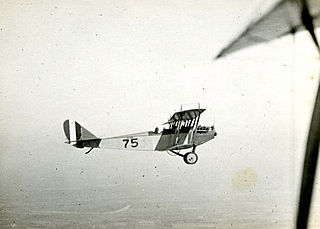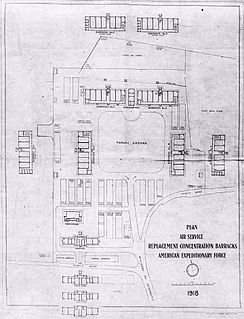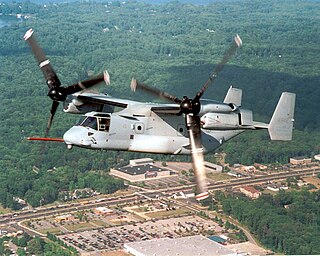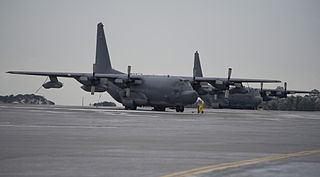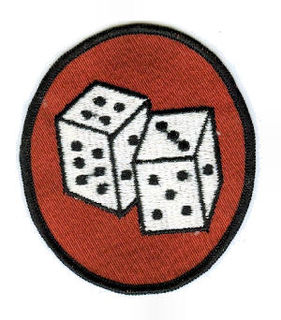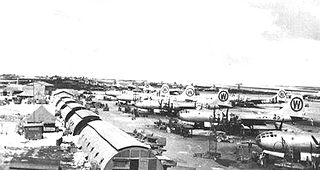| 73d Special Operations Squadron | |
|---|---|
 AC-130J | |
| Active | 1918–2015; 2018- |
| Country | |
| Branch | |
| Type | Squadron |
| Part of | 1st Special Operations Wing > 1st Special Operations Group |
| Garrison/HQ | Hurlburt Field |
| Motto(s) | Without Fail |
| Engagements | World War I
|
| Decorations | Air Force Outstanding Unit Award |
| Insignia | |
| 73d Special Operations Squadron emblem (approved 27 June 2007) [2] |  |
| Patch with 3d Strategic Support Squadron emblem |  |
| 73d Pursuit Squadron emblem (approved 23 March 1932) [3] |  |
The 73d Special Operations Squadron is a unit of the United States Air Force, assigned to the 1st Special Operations Wing at Hurlburt Field, Florida. The squadron operates the AC-130J Ghostrider ground-attack aircraft in support of Air Force Special Operations Command.

The United States Air Force (USAF) is the aerial and space warfare service branch of the United States Armed Forces. It is one of the five branches of the United States Armed Forces, and one of the seven American uniformed services. Initially formed as a part of the United States Army on 1 August 1907, the USAF was established as a separate branch of the U.S. Armed Forces on 18 September 1947 with the passing of the National Security Act of 1947. It is the youngest branch of the U.S. Armed Forces, and the fourth in order of precedence. The USAF is the largest and most technologically advanced air force in the world. The Air Force articulates its core missions as air and space superiority, global integrated intelligence, surveillance, and reconnaissance, rapid global mobility, global strike, and command and control.

The 1st Special Operations Wing at Hurlburt Field, Florida is one of three United States Air Force active duty Special Operations wings and falls under the Air Force Special Operations Command (AFSOC).

Hurlburt Field is a United States Air Force installation located in Okaloosa County, Florida, immediately west of the Town of Mary Esther. It is part of the greater Eglin Air Force Base reservation, and is home to Headquarters Air Force Special Operations Command (AFSOC), the 1st Special Operations Wing (1 SOW), the USAF Special Operations School (USAFSOS) and the Air Combat Command's (ACC) 505th Command and Control Wing. It was named for First Lieutenant Donald Wilson Hurlburt, who died in a crash at Eglin. The installation is nearly 6,700 acres (27 km2), and employs nearly 8,000 military personnel.
Contents
- History
- World War I
- Inter-war period
- World War II
- Postwar
- Lineage
- Assignments
- Stations
- Aircraft
- See also
- References
- Notes
- Bibliography
The 73d is one of the oldest in the Air Force, its origins dating to the formation of the 73d Aero Squadron in February 1918. It served on the Western Front in France during World War I, and took part in the Aleutian Campaign during World War II. It was part of Strategic Air Command during the Cold War. The 73d was inactivated and its personnel and equipment transferred to the 16th Special Operations Squadron in 2015. The squadron was reactivated on 23rd of February 2018 to fly the new AC-130J "Ghostrider" gunship assigned to the 1st Special Operations Group at Hulburt Field, Florida. [4]

The Western Front was the main theatre of war during the First World War. Following the outbreak of war in August 1914, the German Army opened the Western Front by invading Luxembourg and Belgium, then gaining military control of important industrial regions in France. The tide of the advance was dramatically turned with the Battle of the Marne. Following the Race to the Sea, both sides dug in along a meandering line of fortified trenches, stretching from the North Sea to the Swiss frontier with France, which changed little except during early 1917 and in 1918.

World War I, also known as the First World War or the Great War, was a global war originating in Europe that lasted from 28 July 1914 to 11 November 1918. Contemporaneously described as "the war to end all wars", it led to the mobilisation of more than 70 million military personnel, including 60 million Europeans, making it one of the largest wars in history. It is also one of the deadliest conflicts in history, with an estimated nine million combatants and seven million civilian deaths as a direct result of the war, while resulting genocides and the 1918 influenza pandemic caused another 50 to 100 million deaths worldwide.

World War II, also known as the Second World War, was a global war that lasted from 1939 to 1945. The vast majority of the world's countries—including all the great powers—eventually formed two opposing military alliances: the Allies and the Axis. A state of total war emerged, directly involving more than 100 million people from over 30 countries. The major participants threw their entire economic, industrial, and scientific capabilities behind the war effort, blurring the distinction between civilian and military resources. World War II was the deadliest conflict in human history, marked by 50 to 85 million fatalities, most of whom were civilians in the Soviet Union and China. It included massacres, the genocide of the Holocaust, strategic bombing, premeditated death from starvation and disease, and the only use of nuclear weapons in war.
